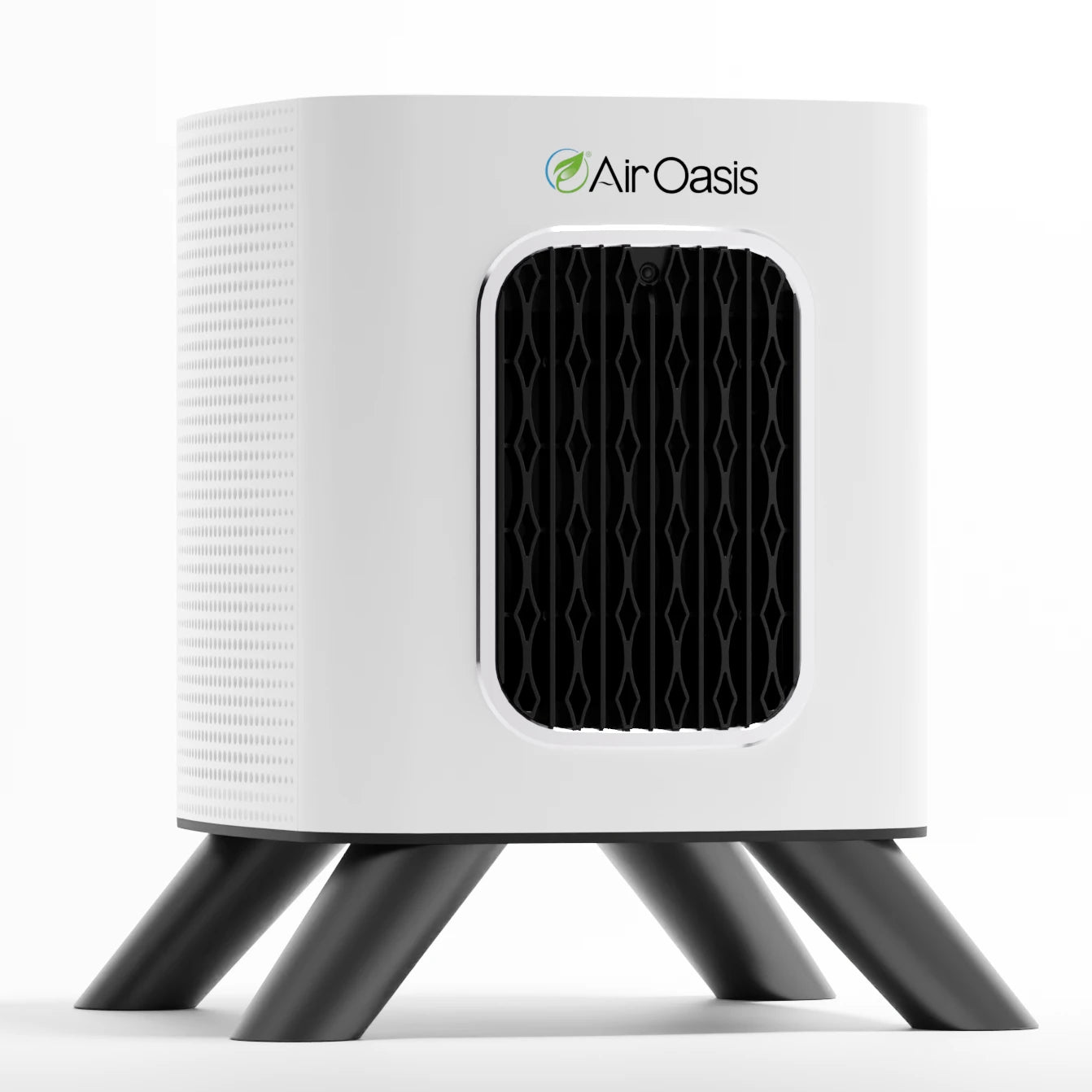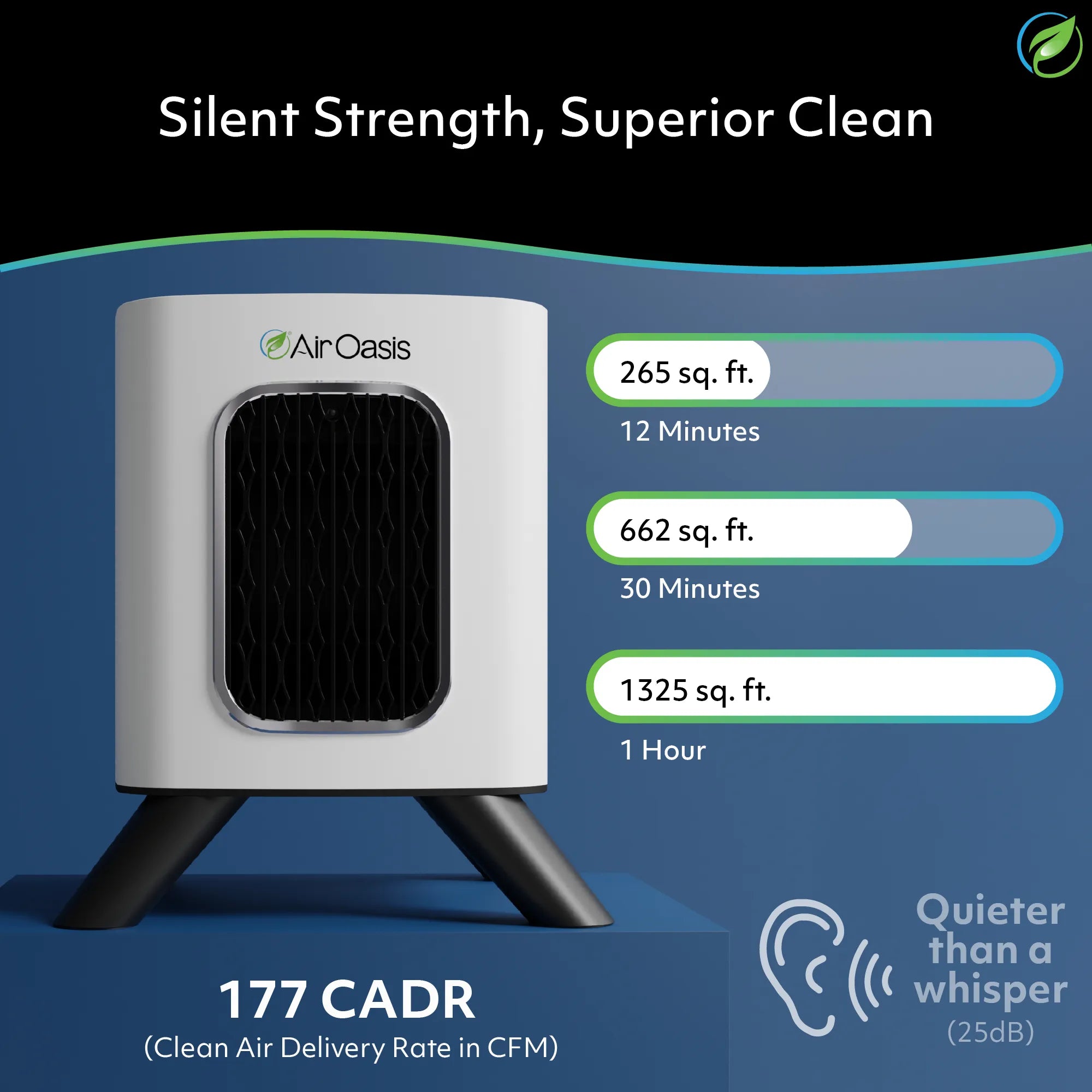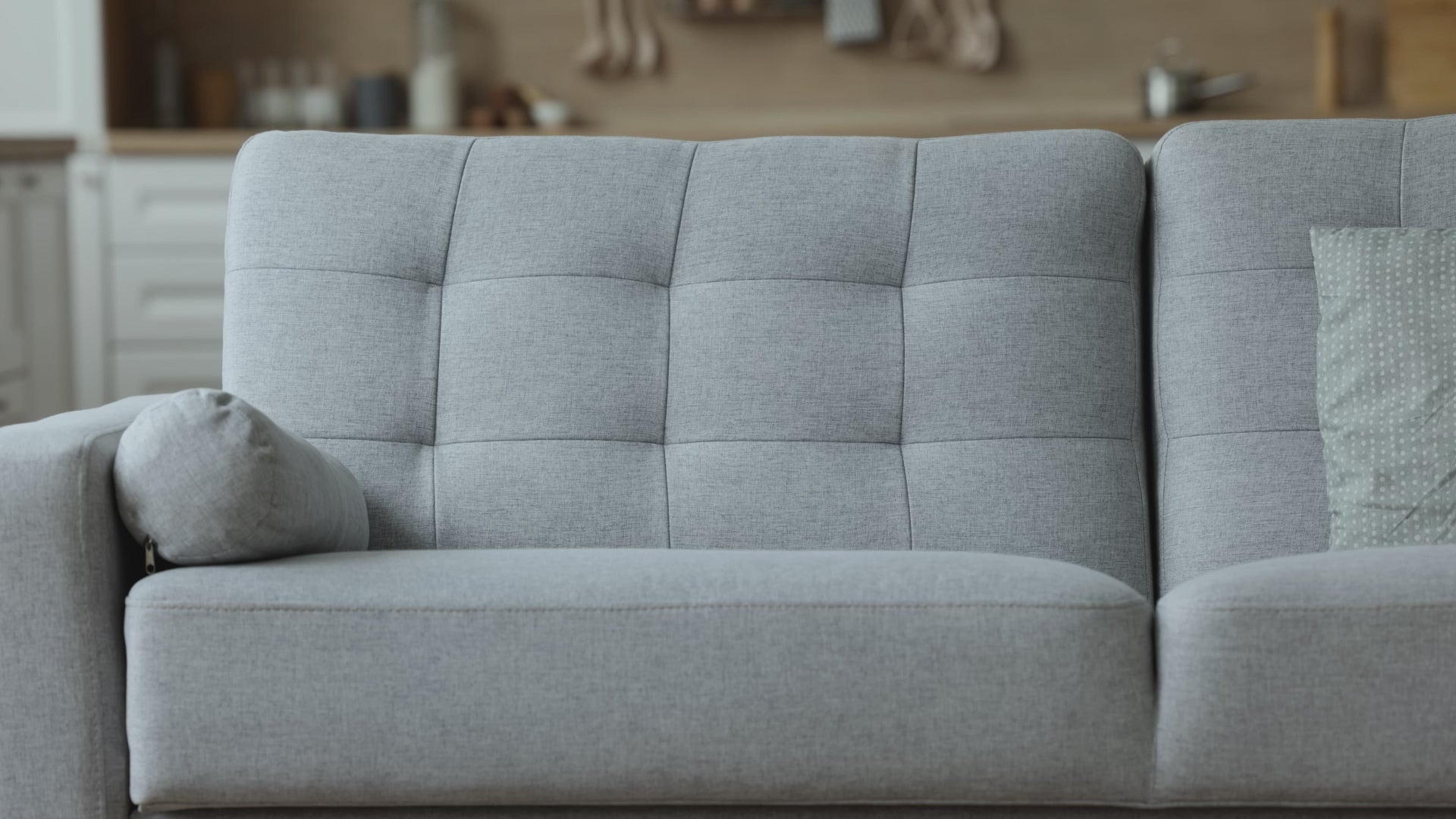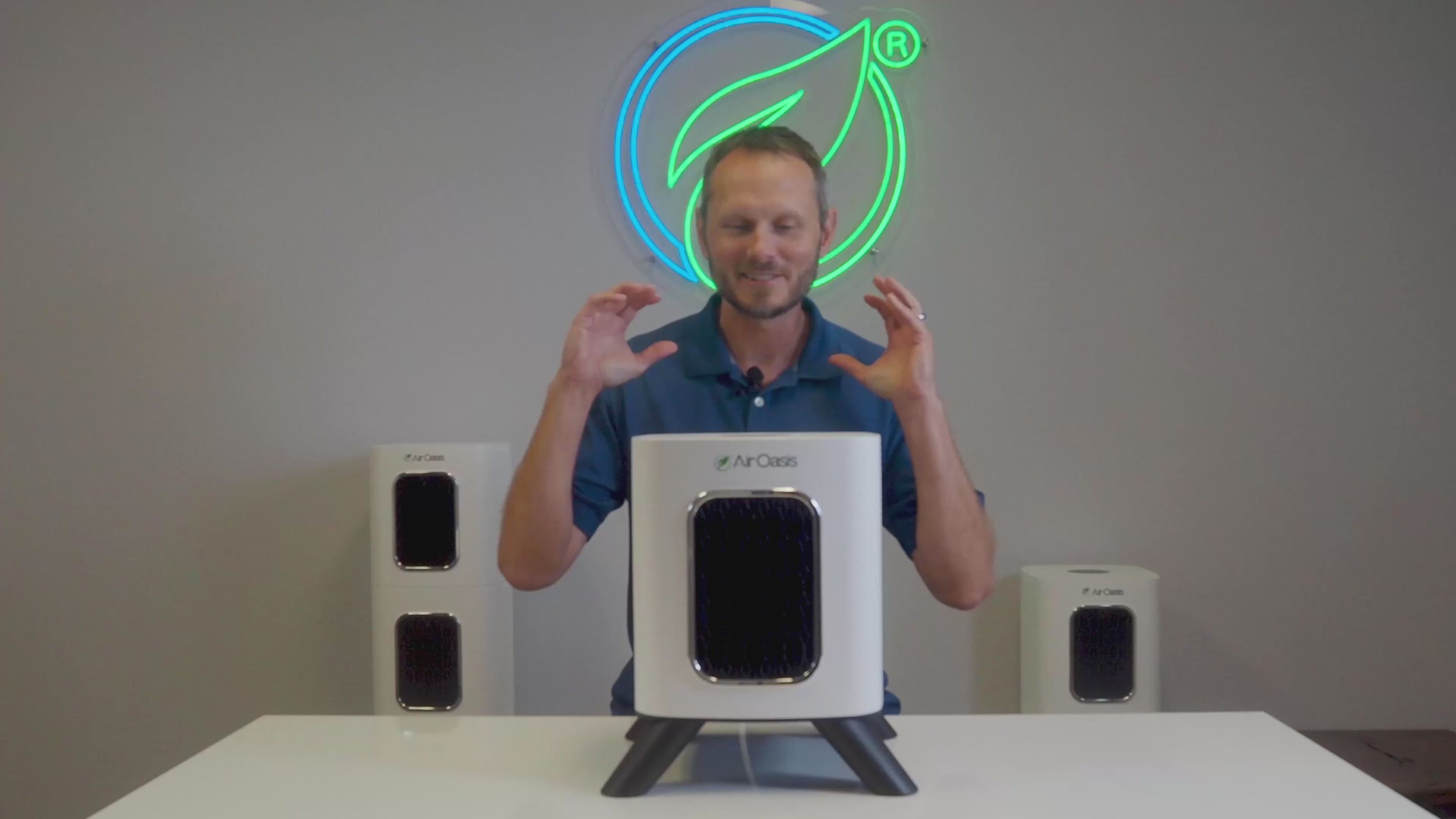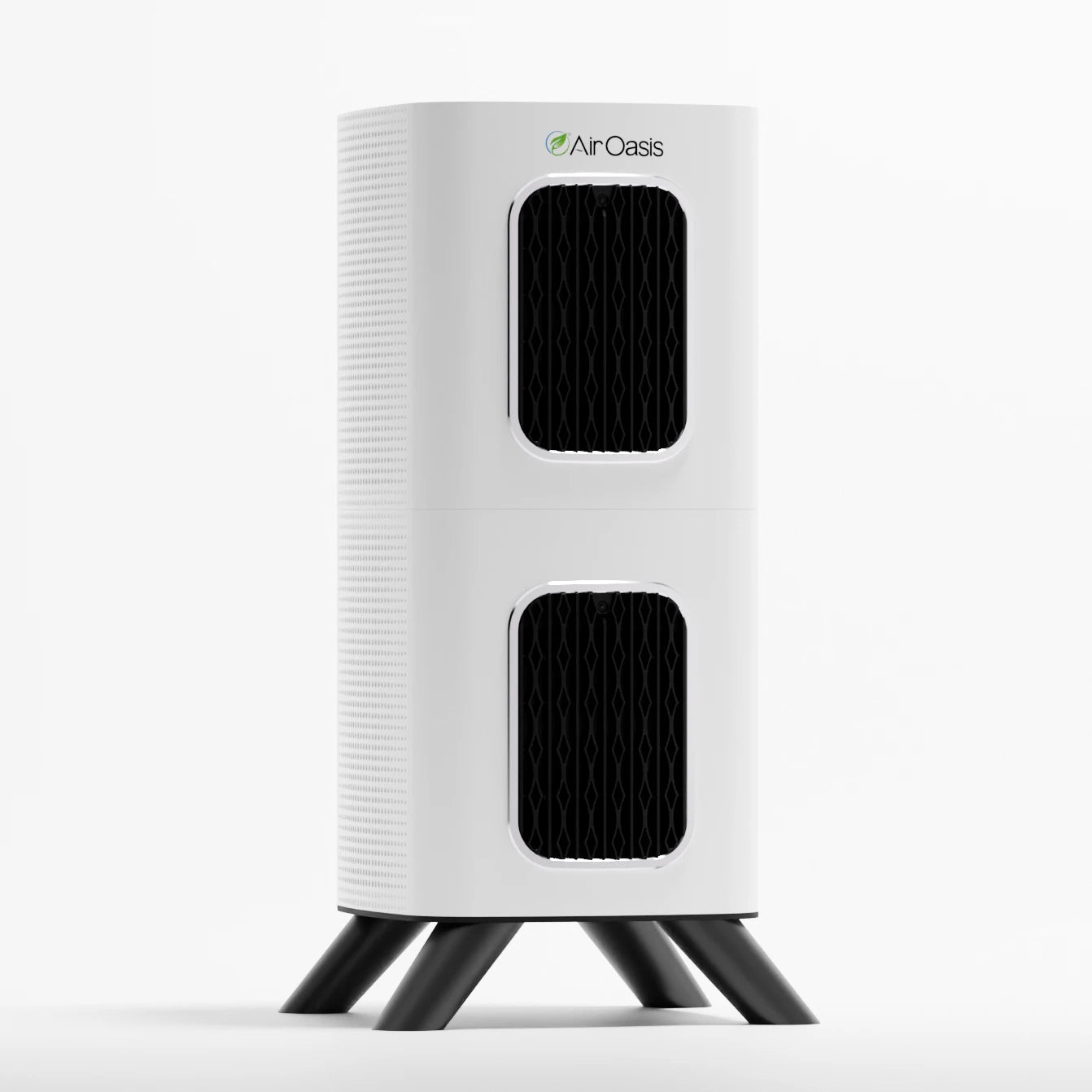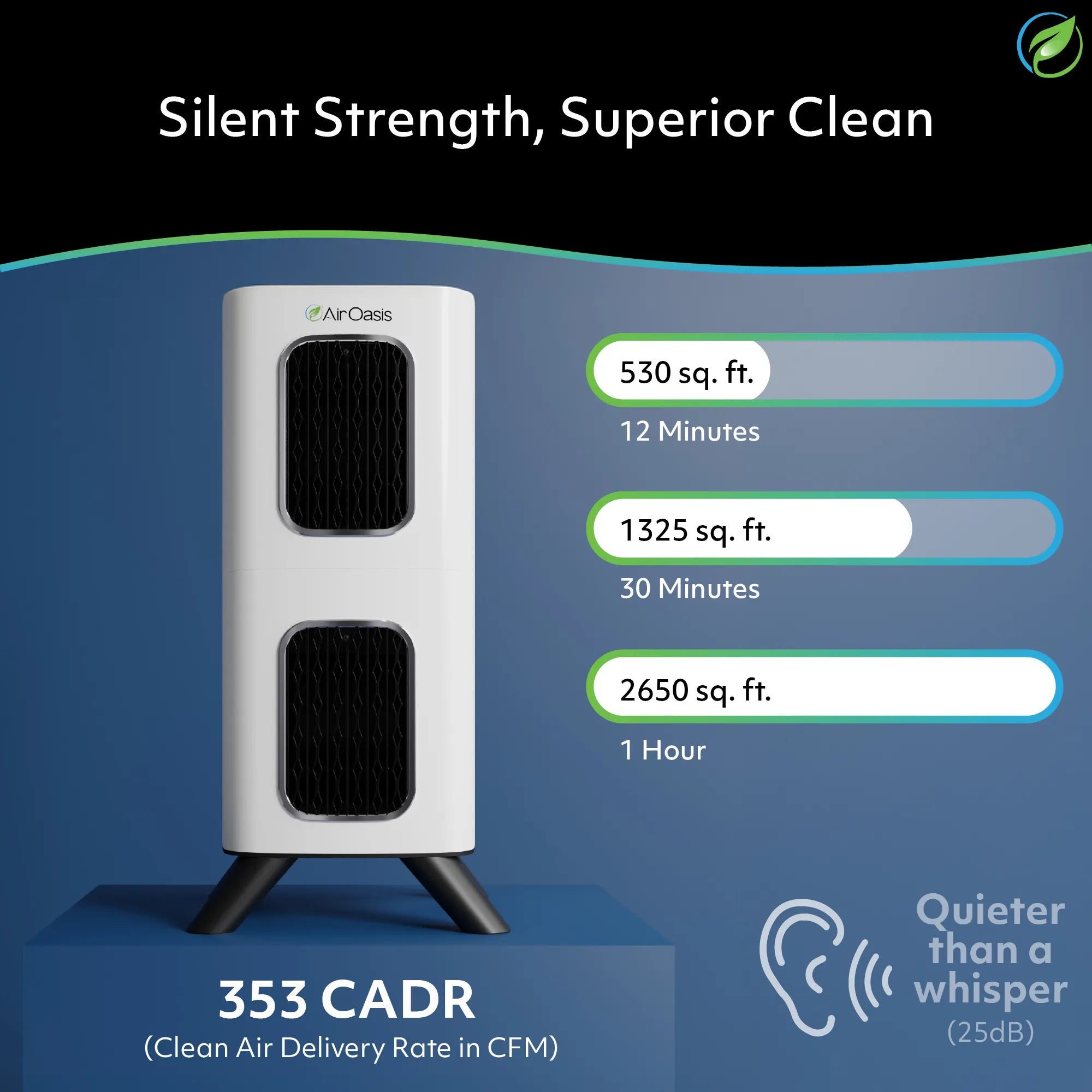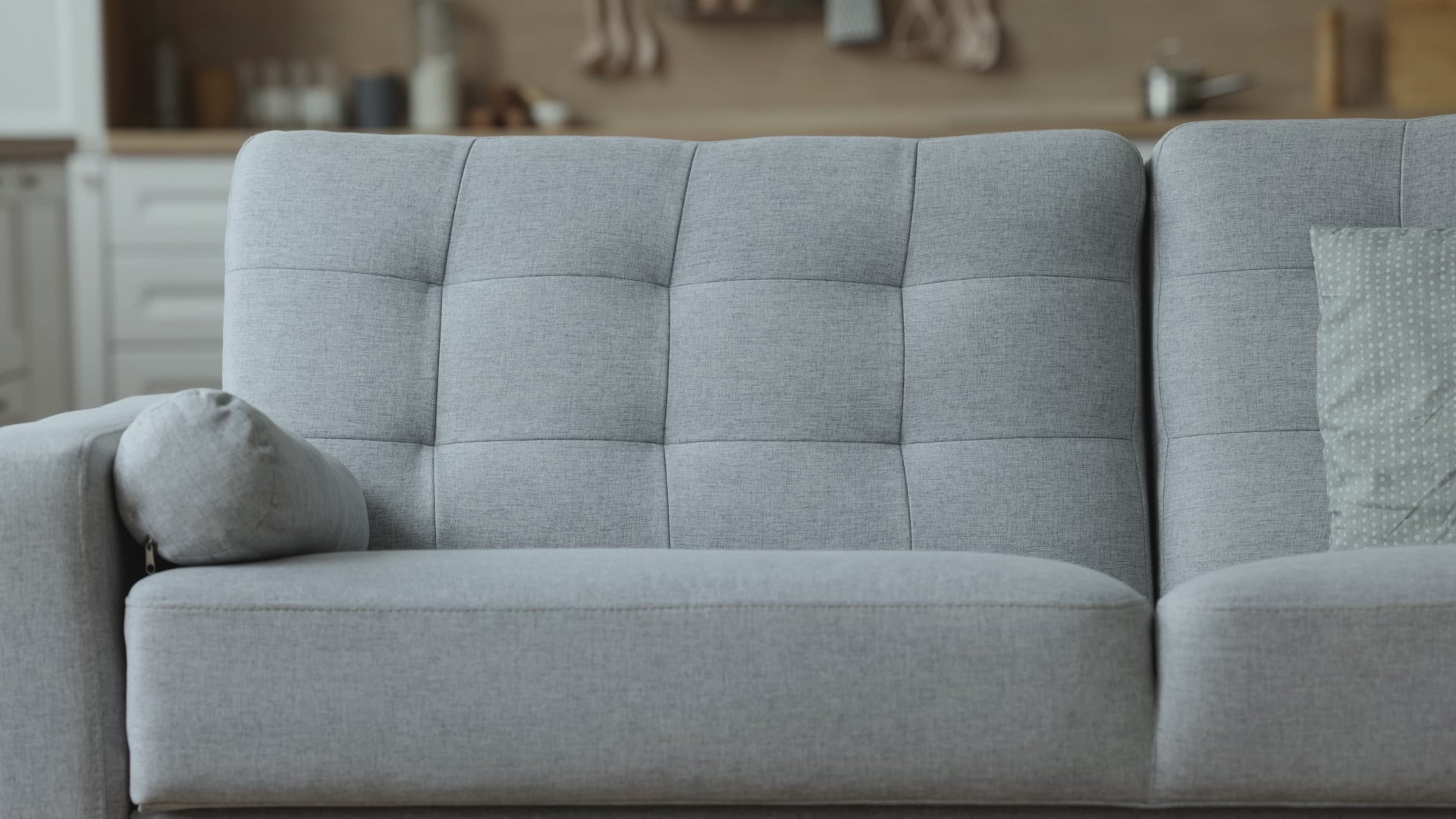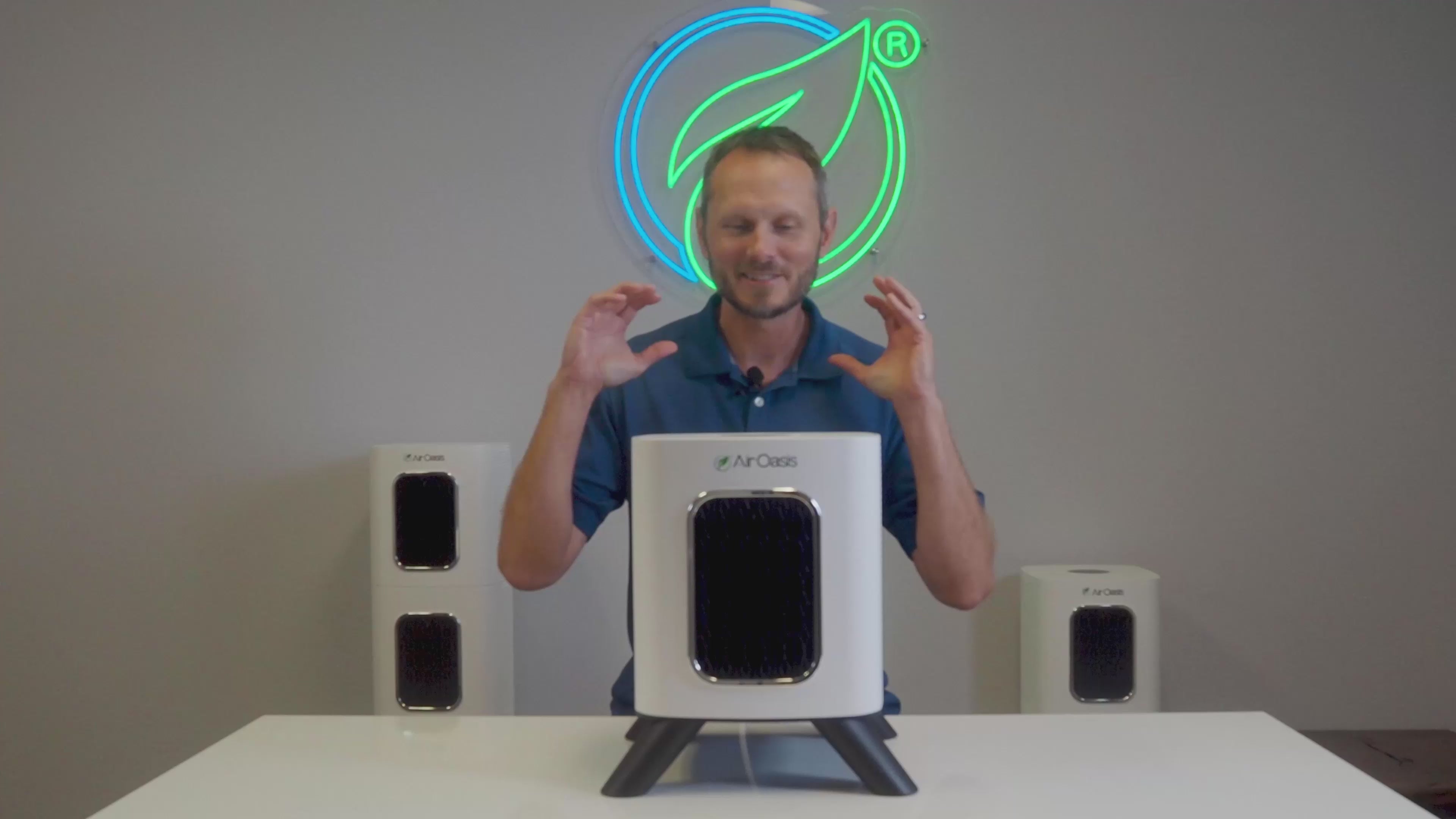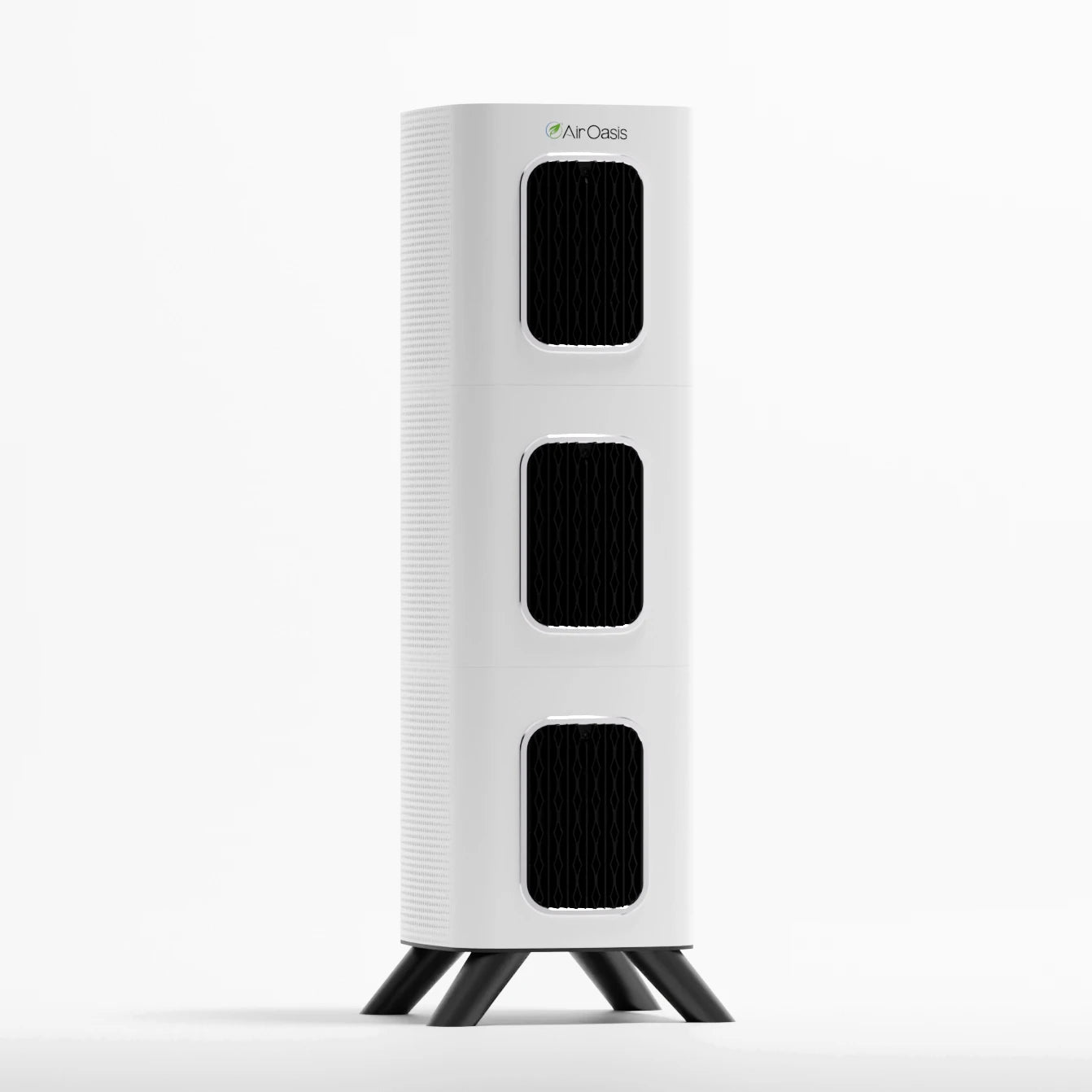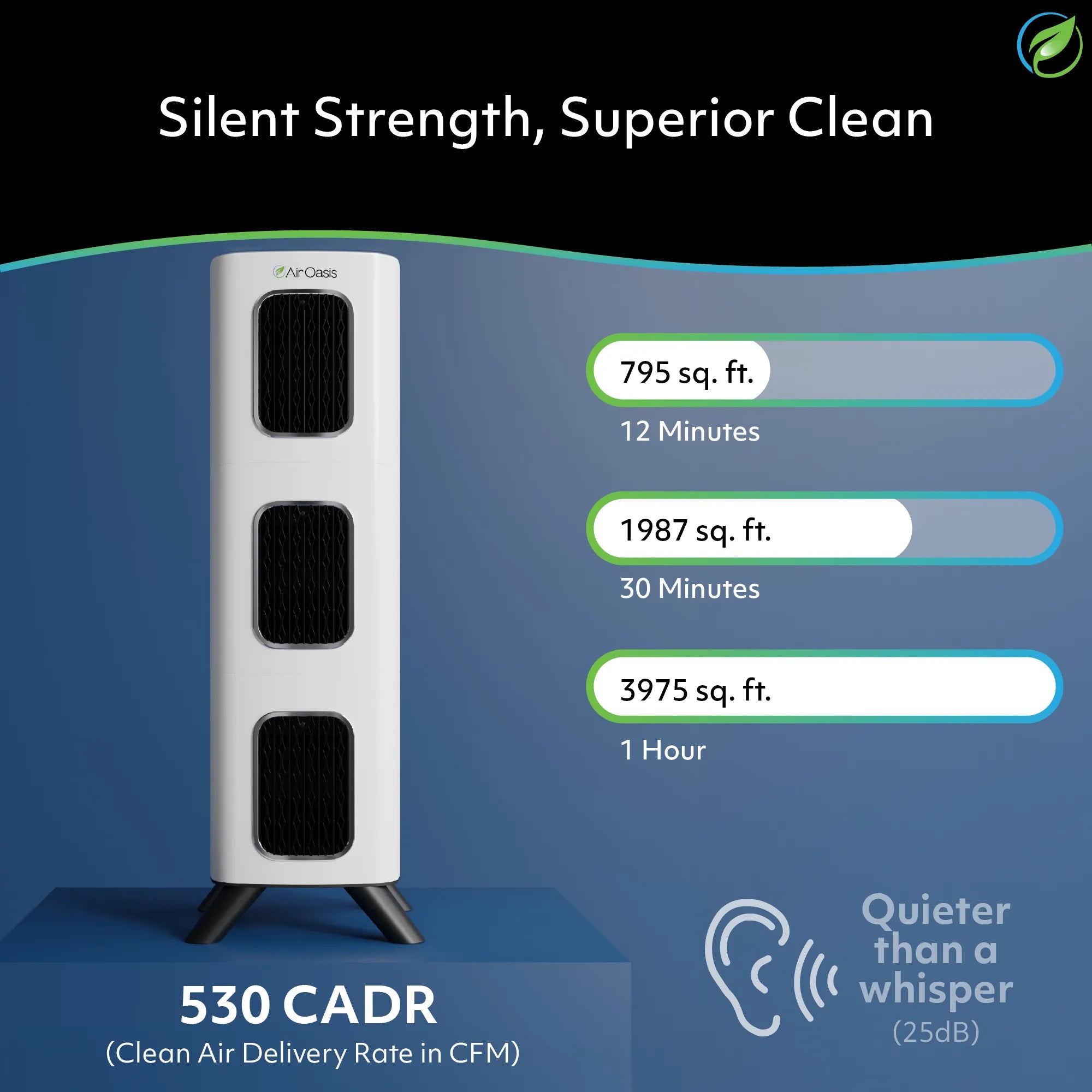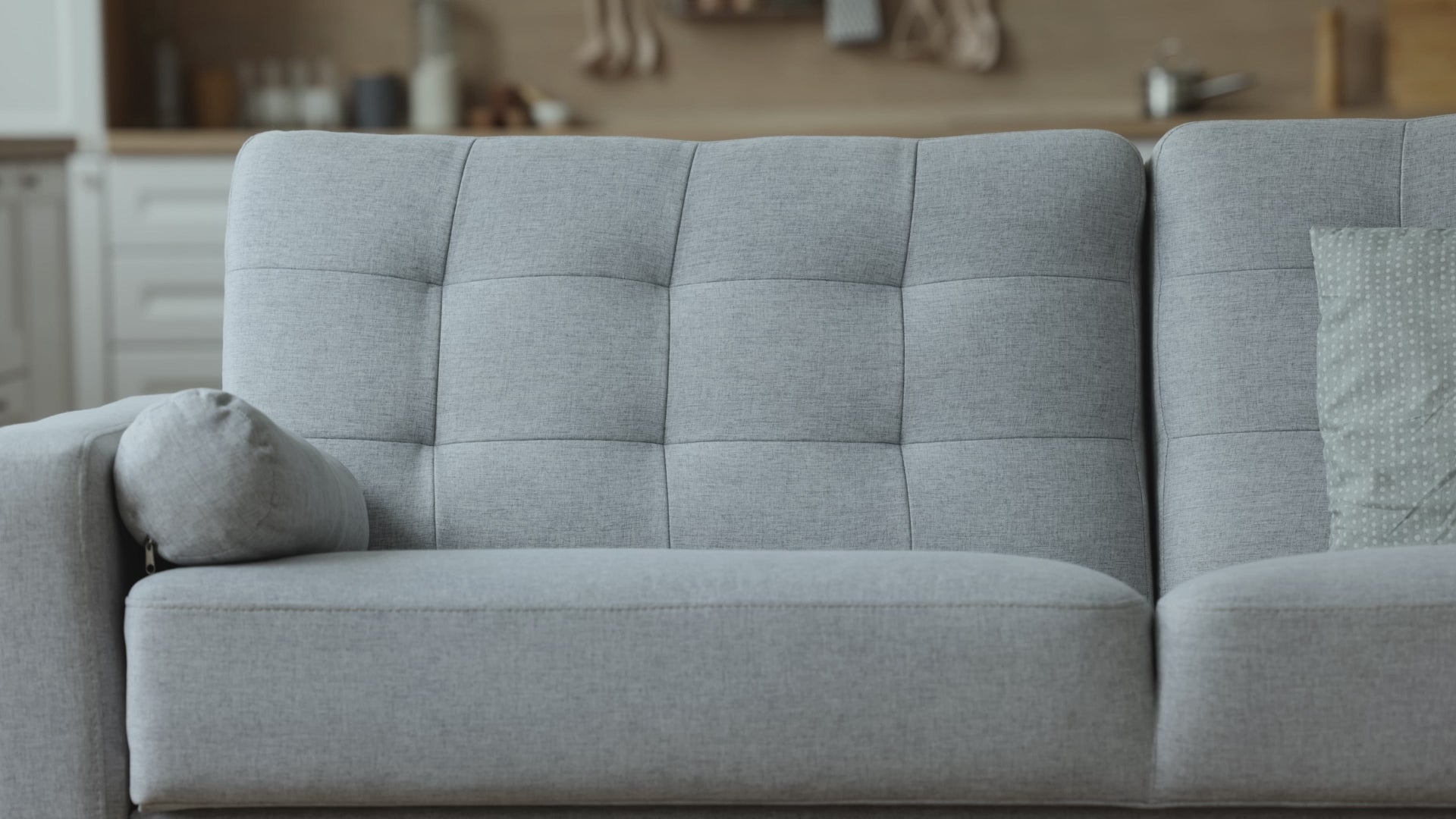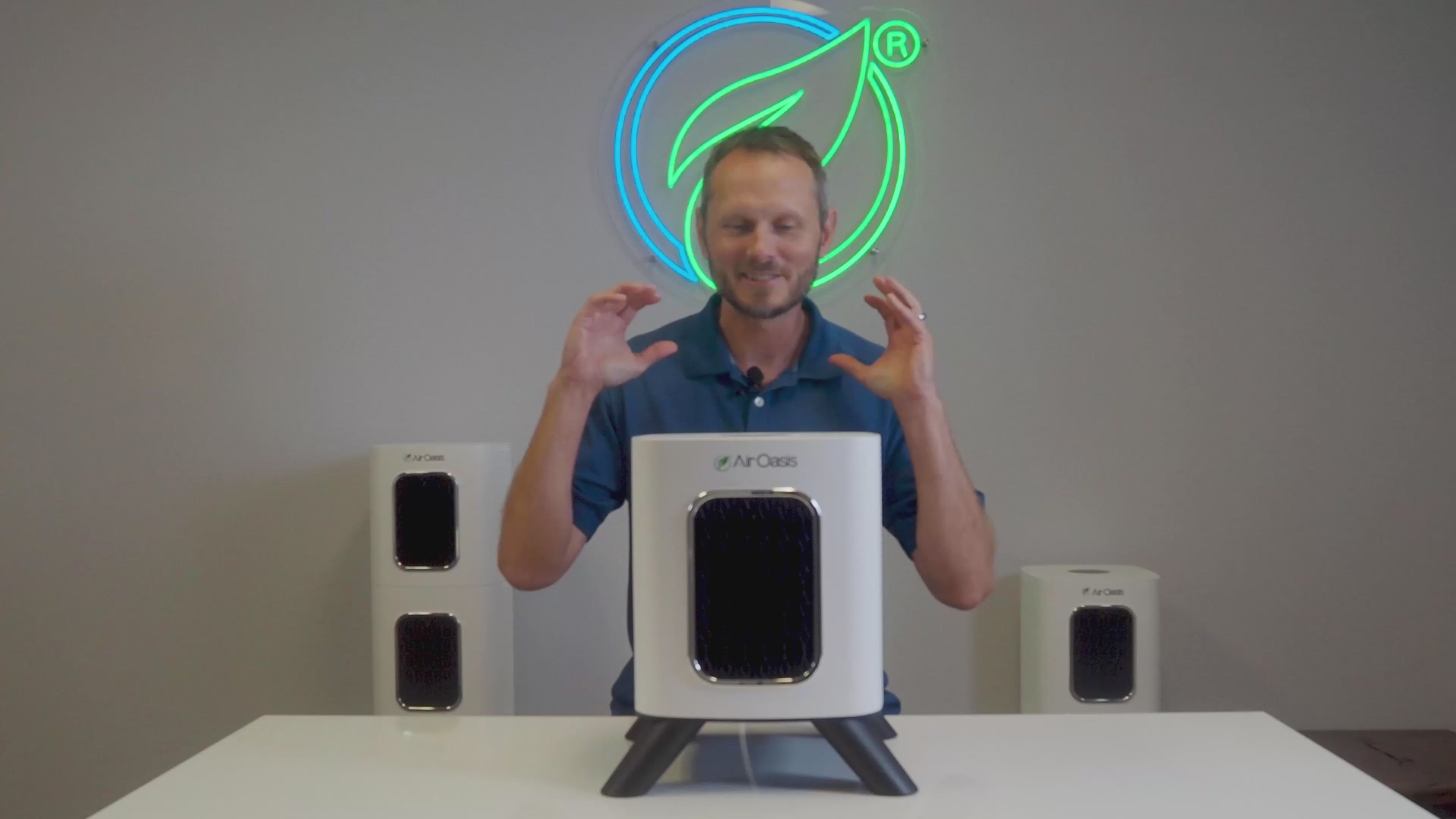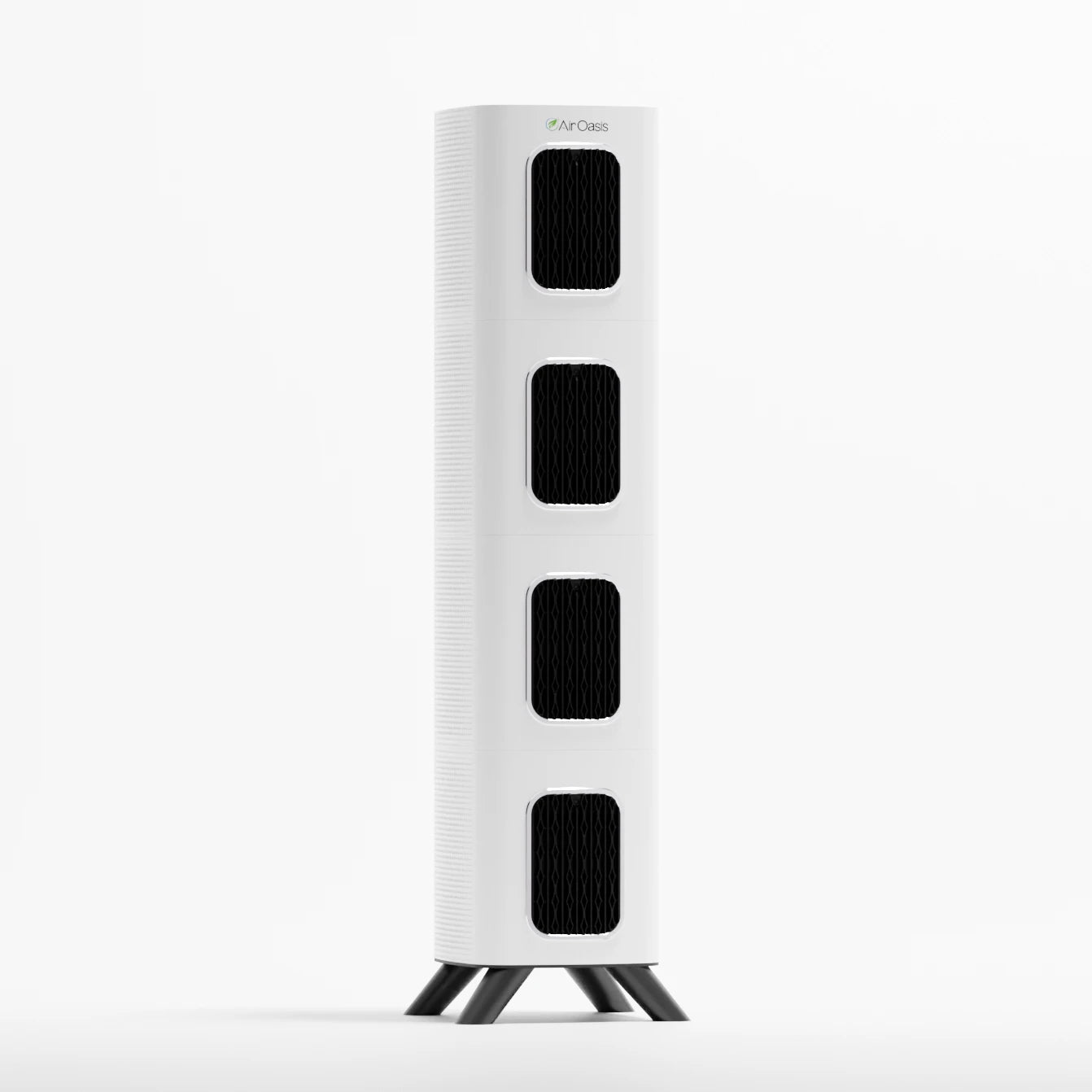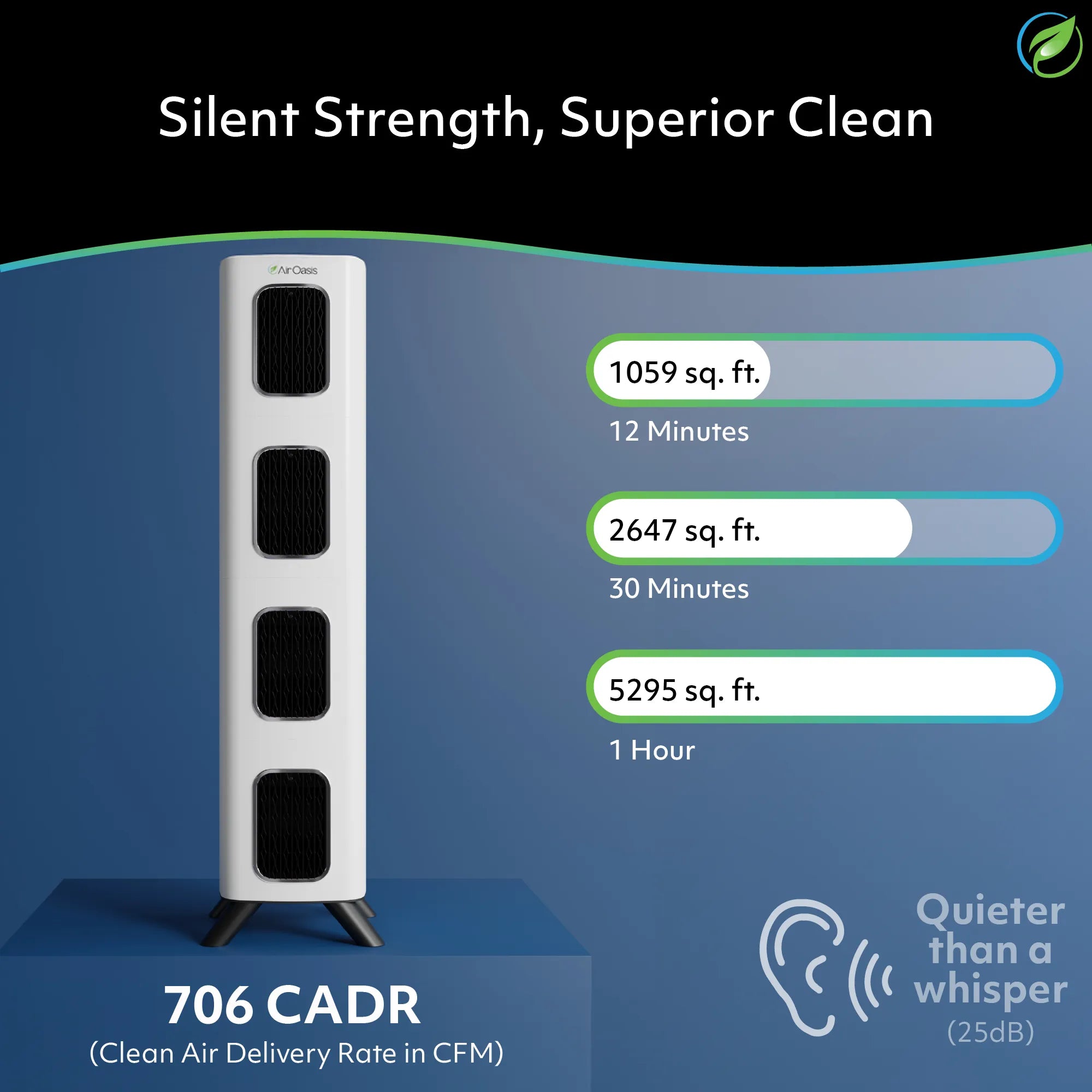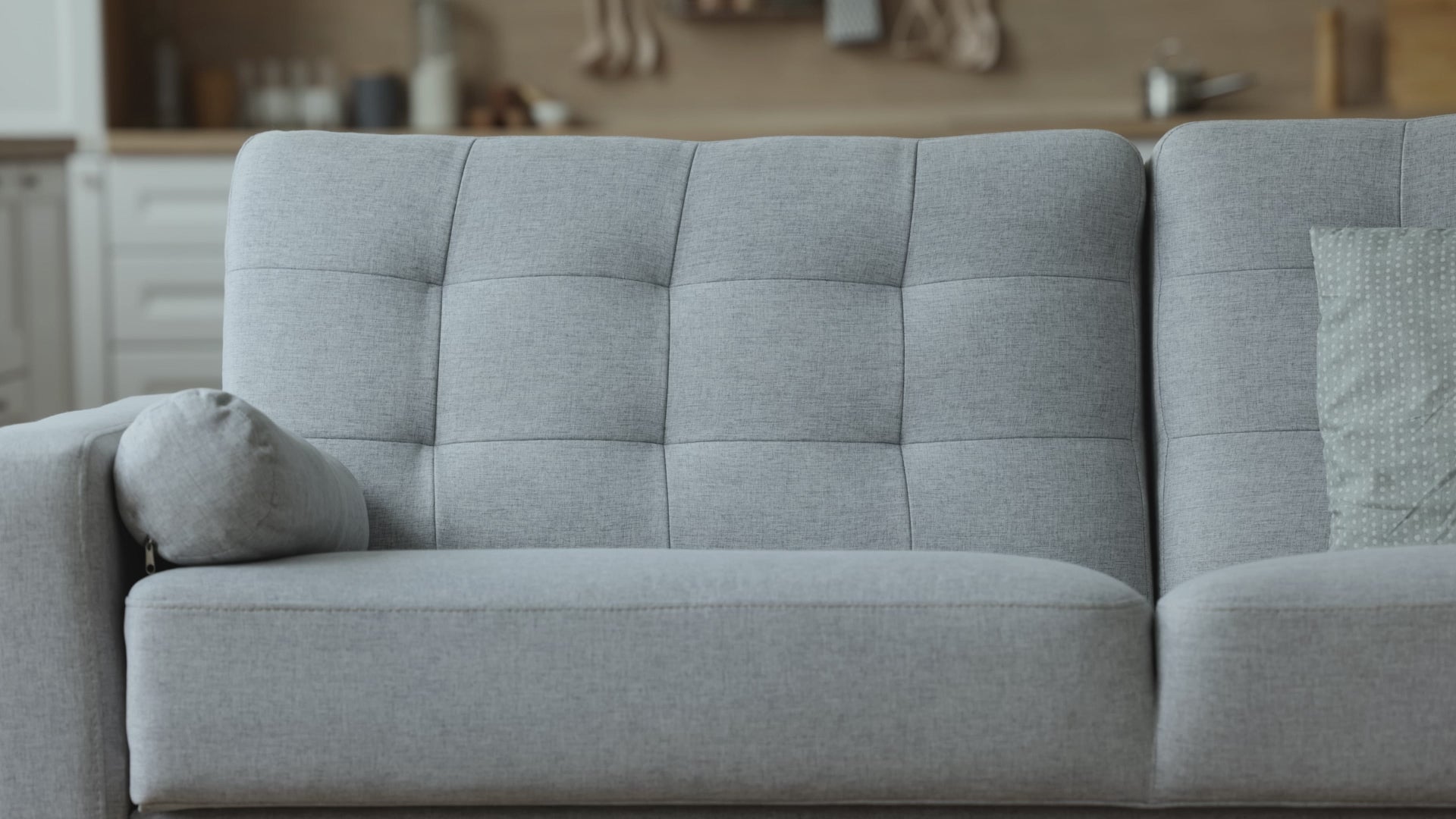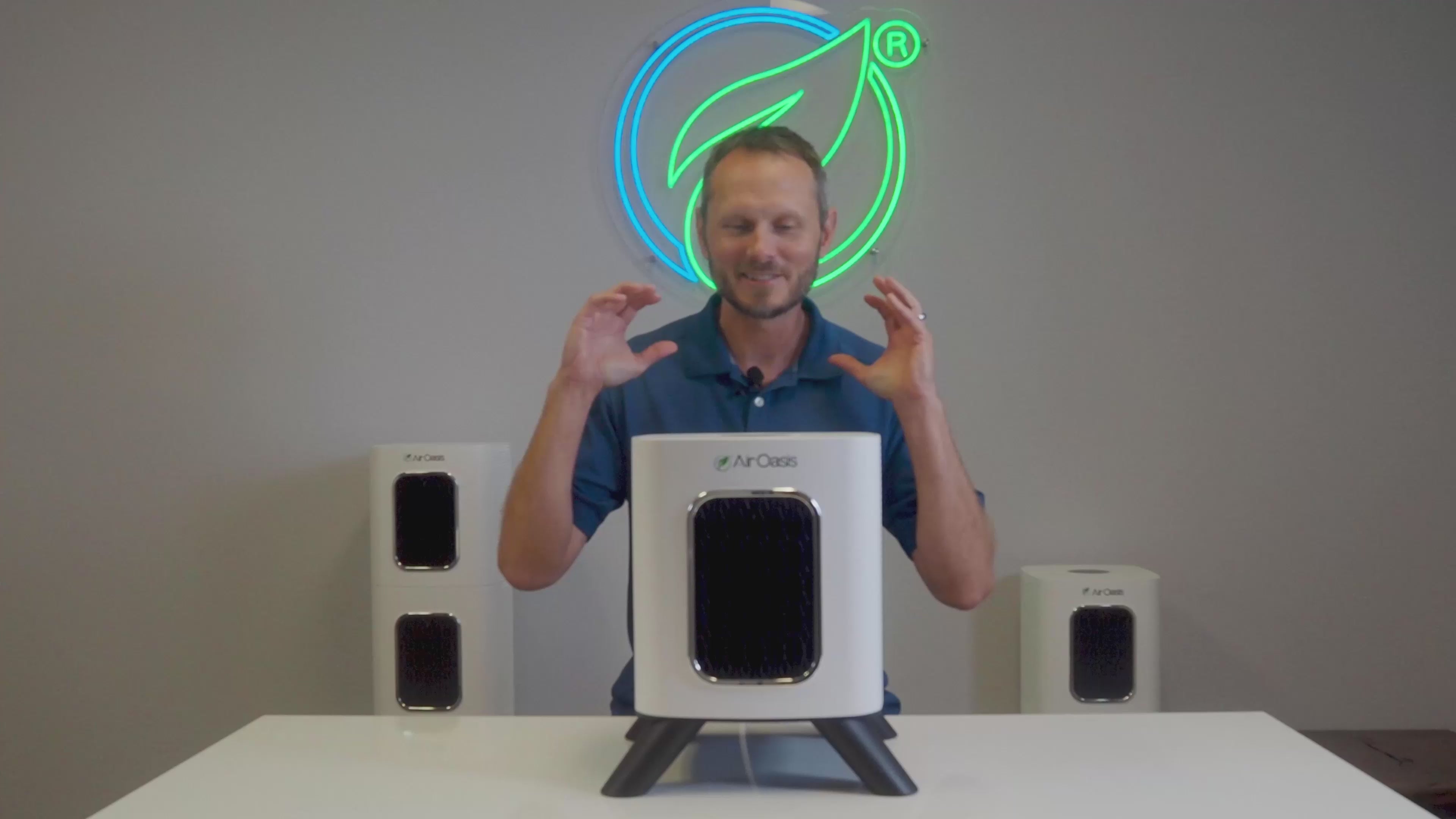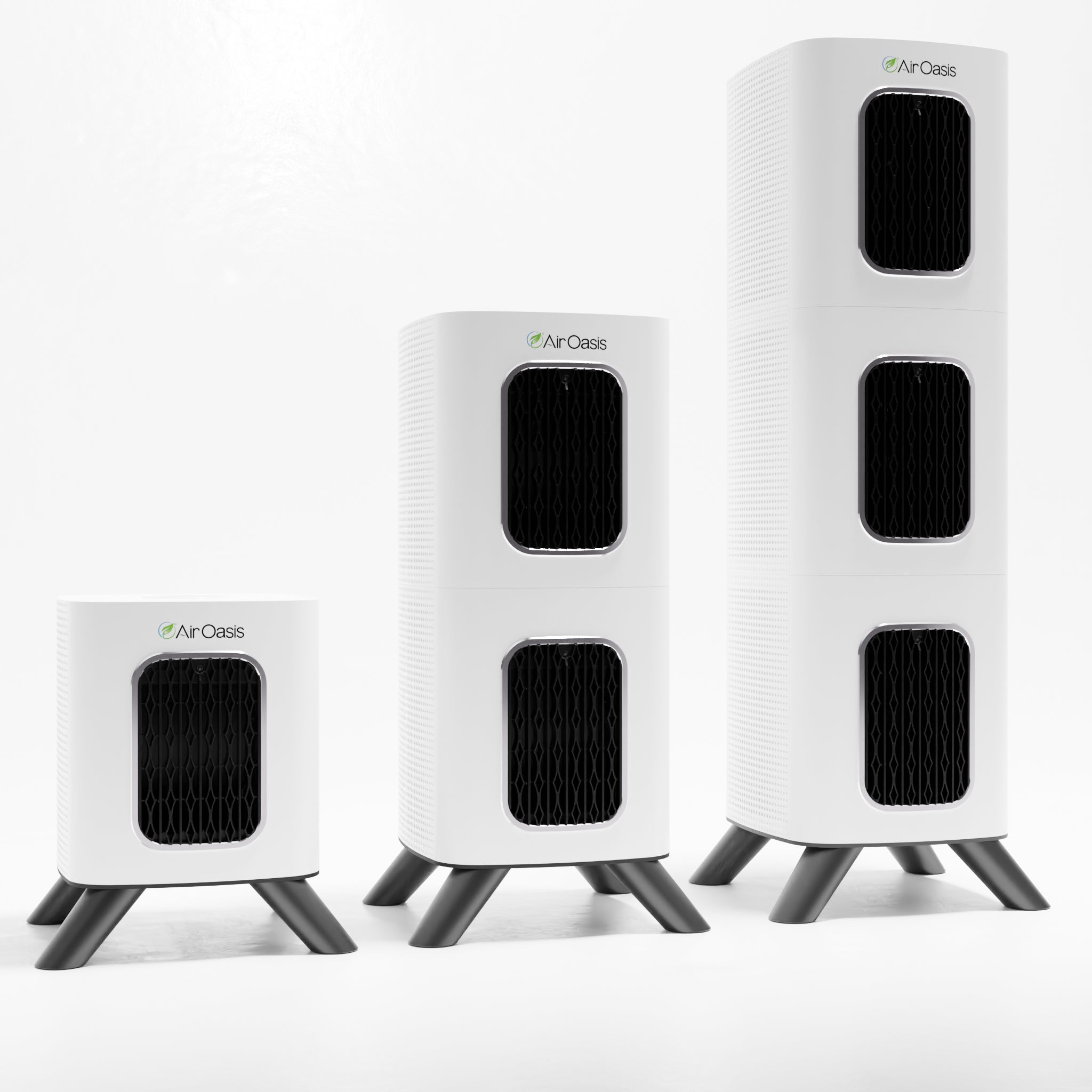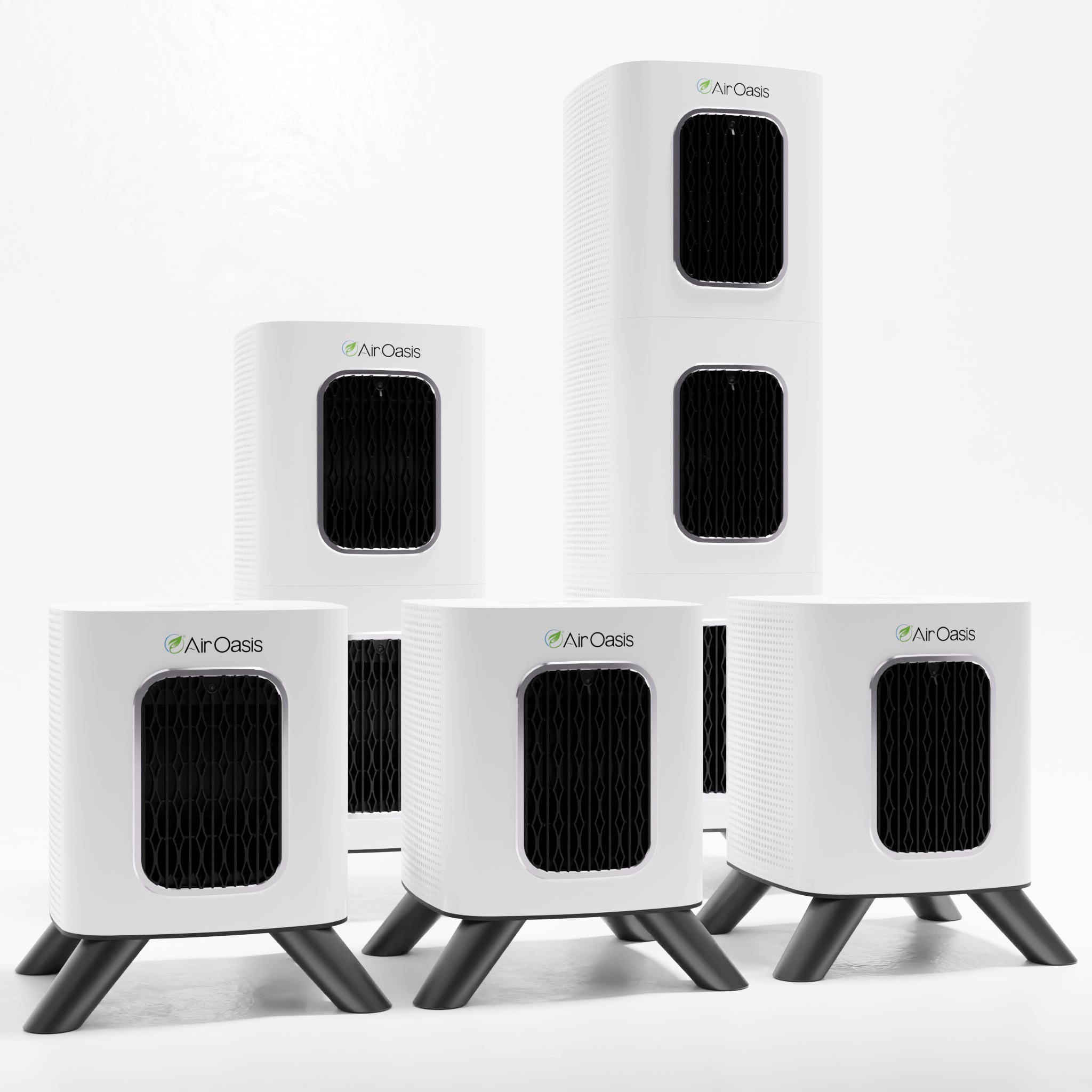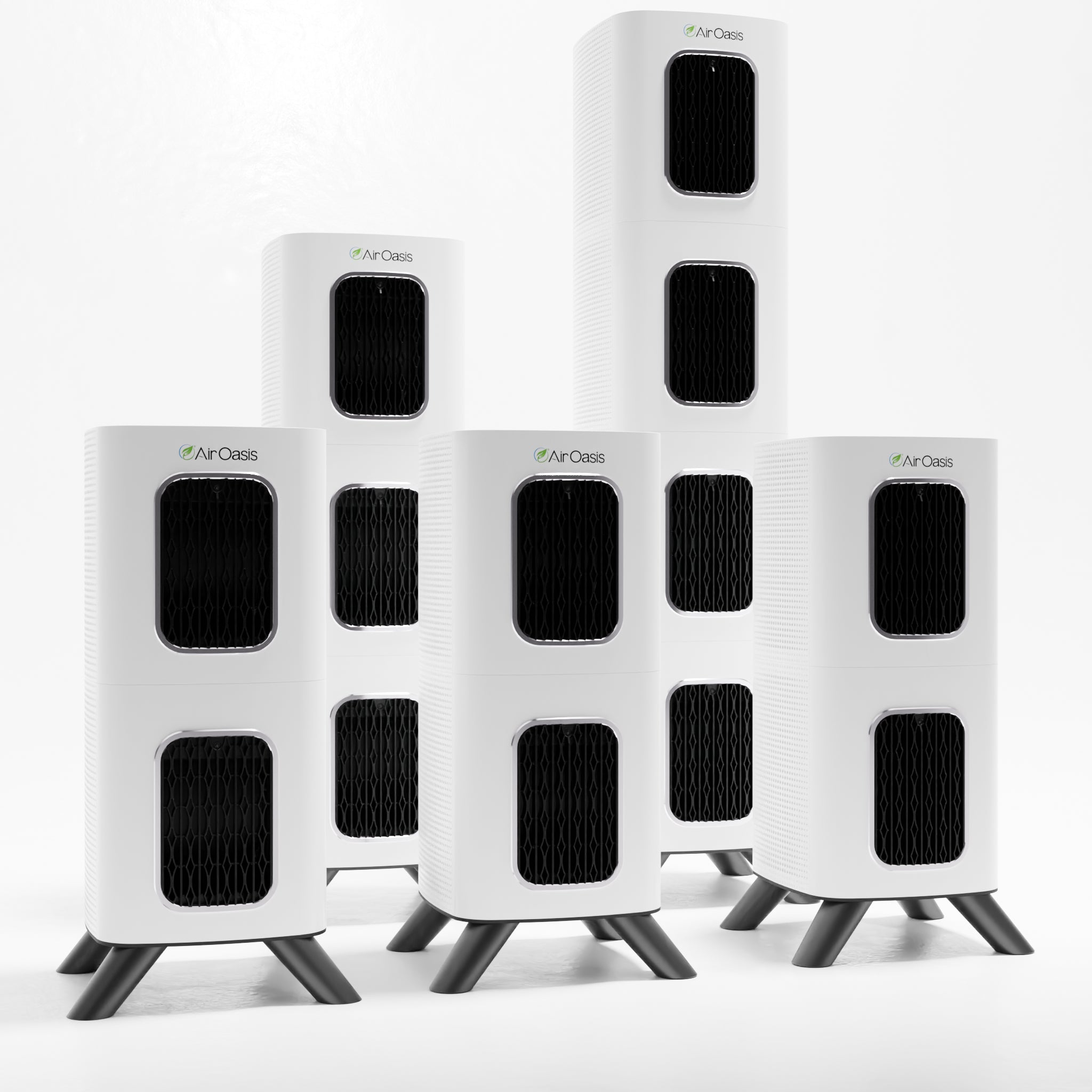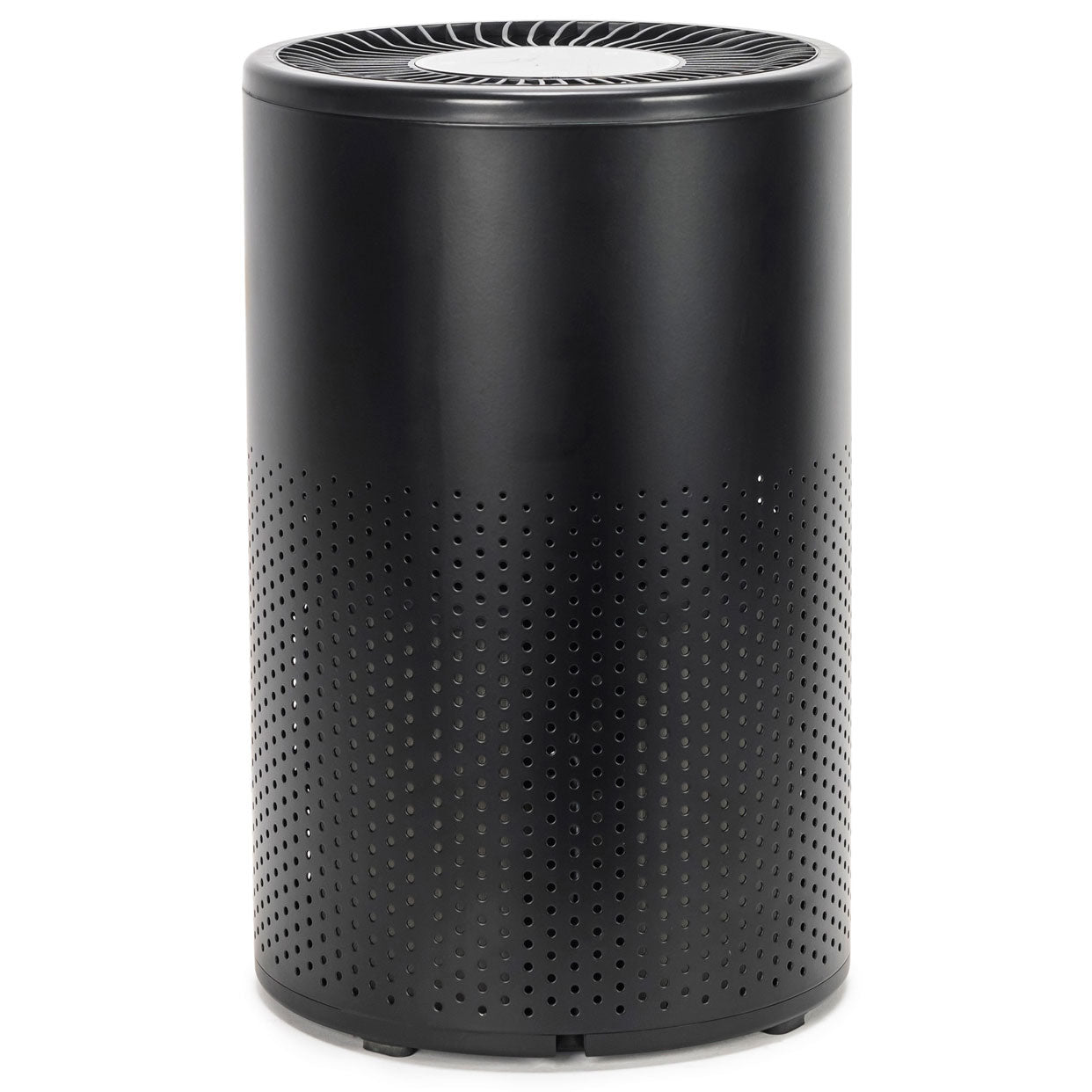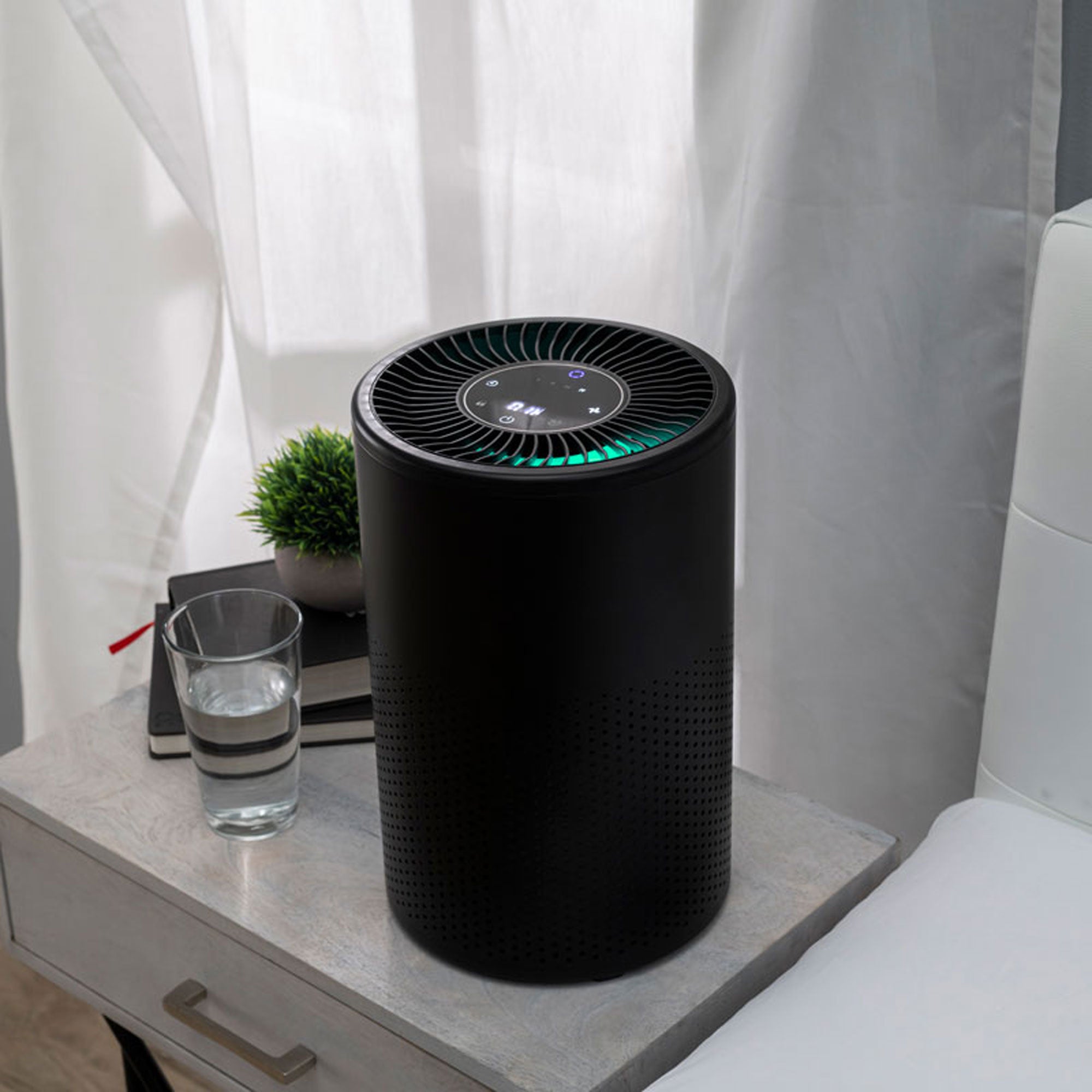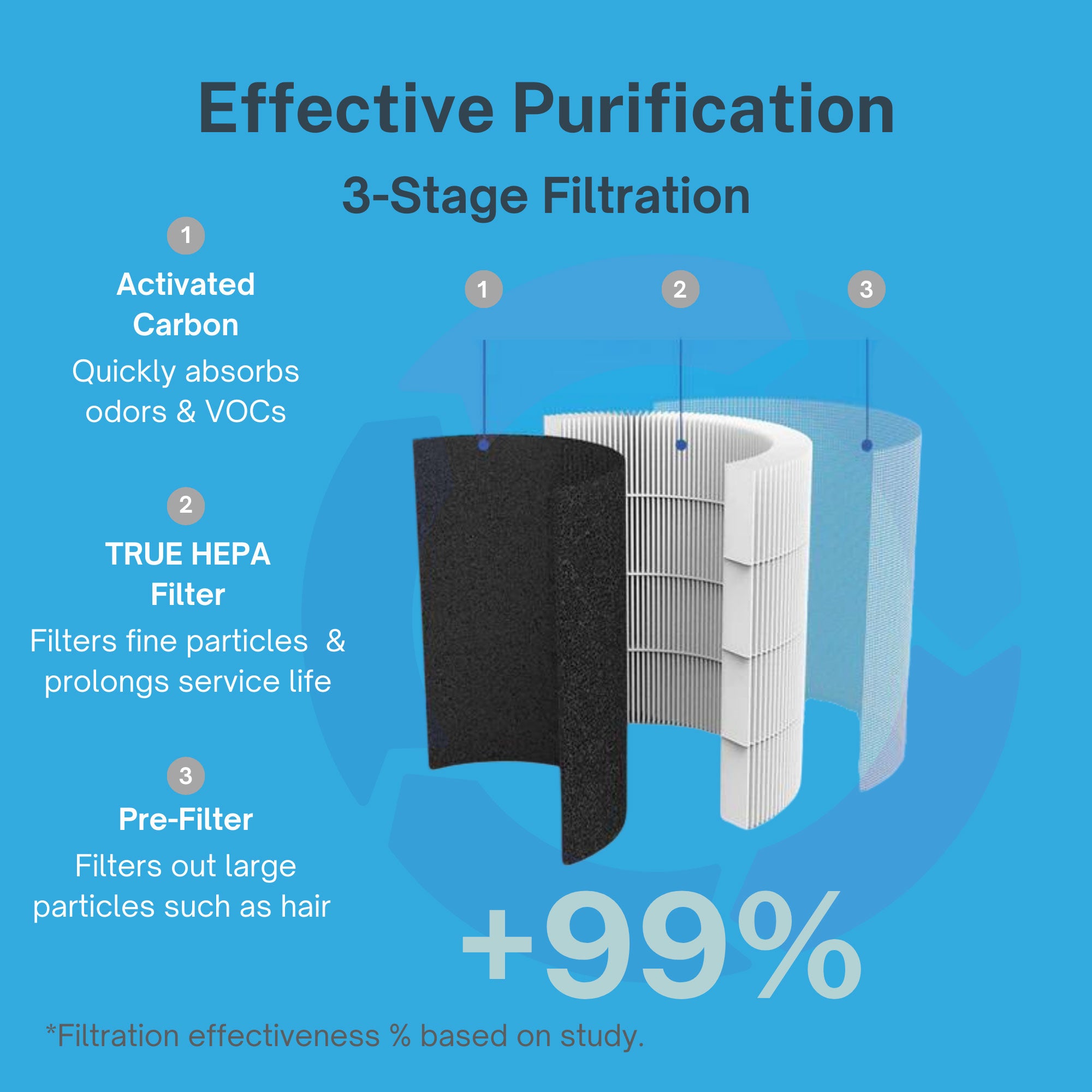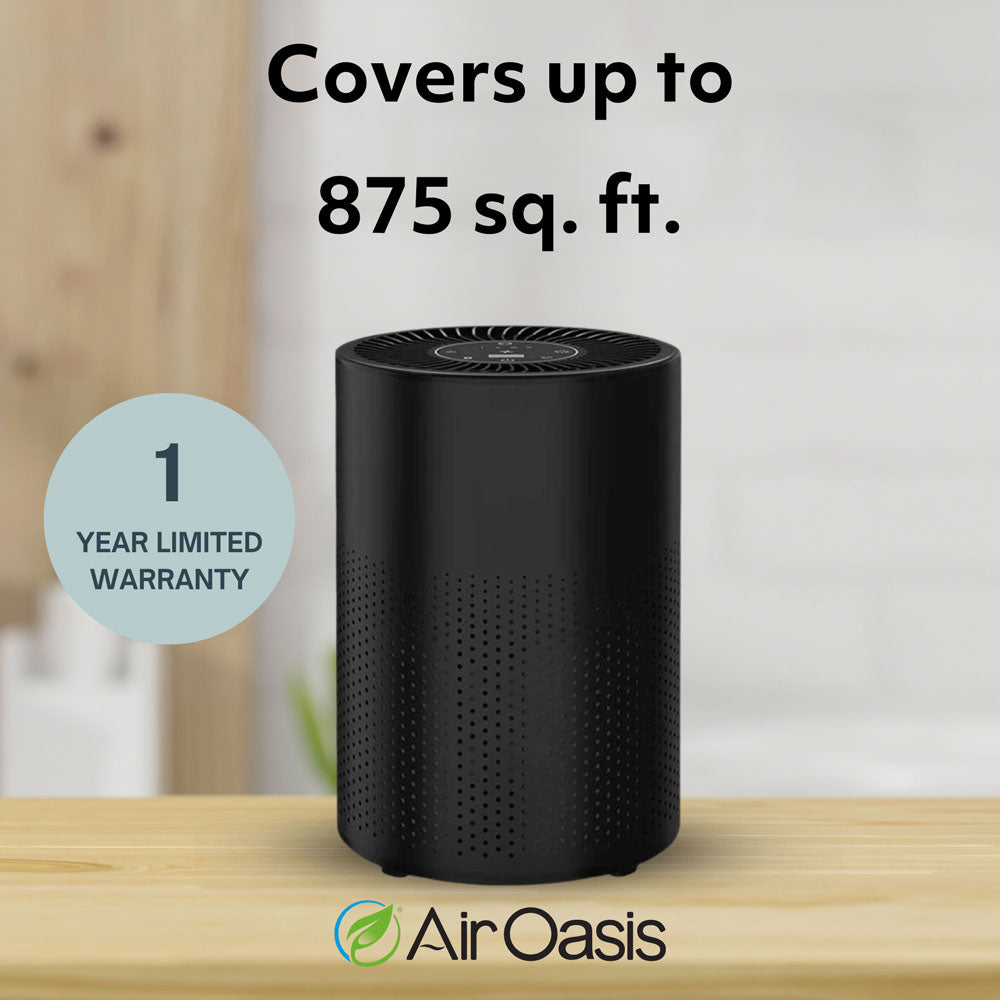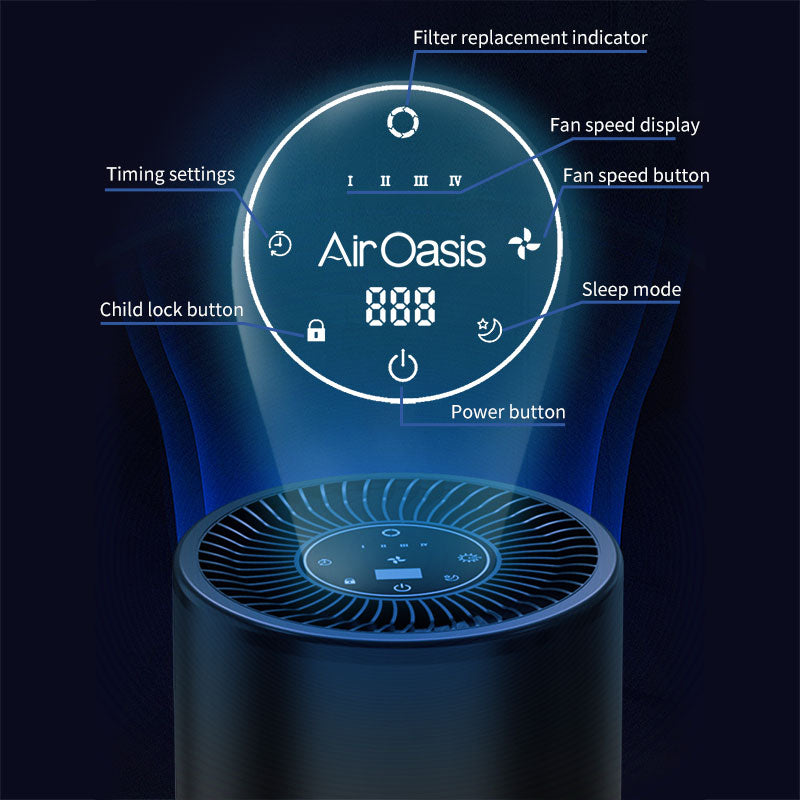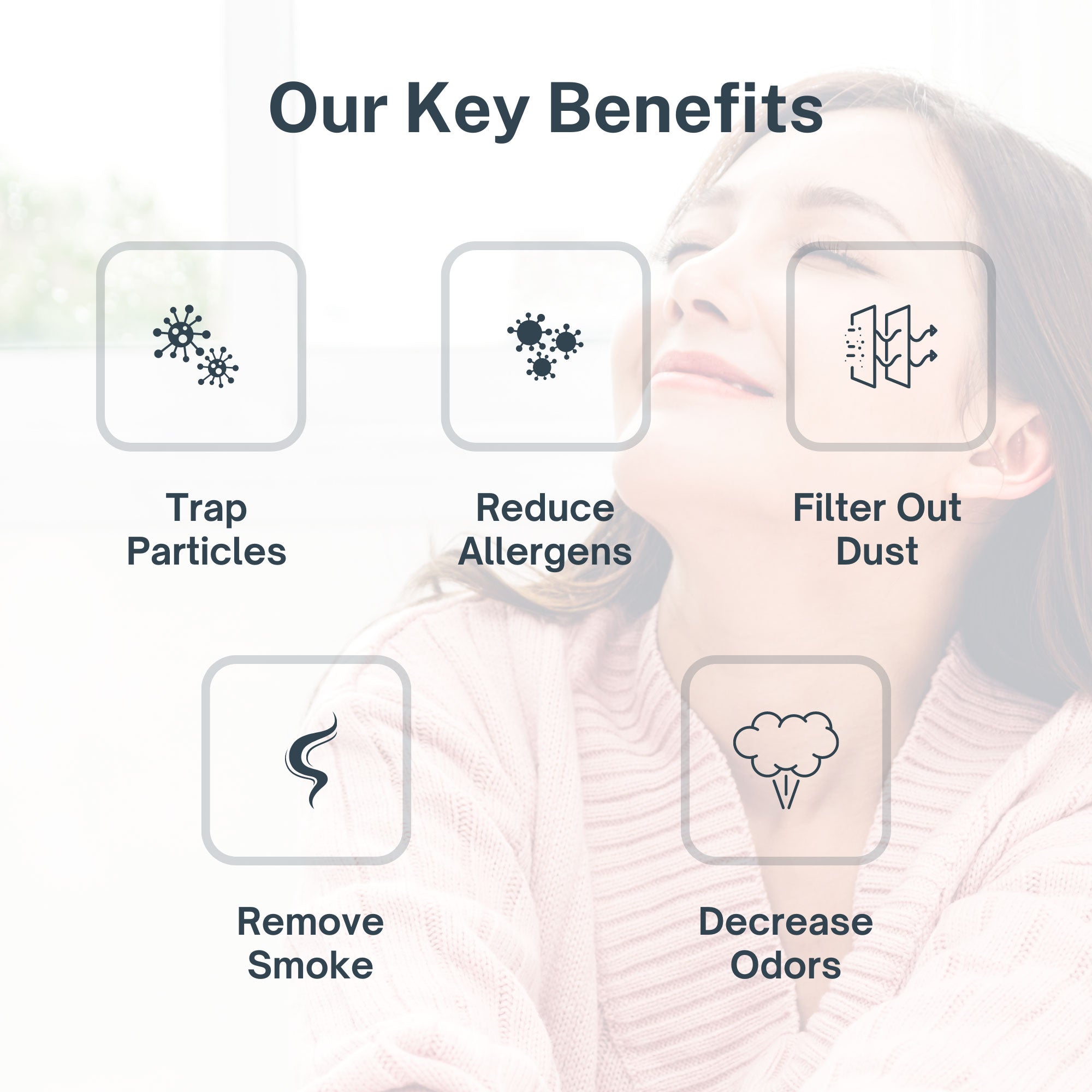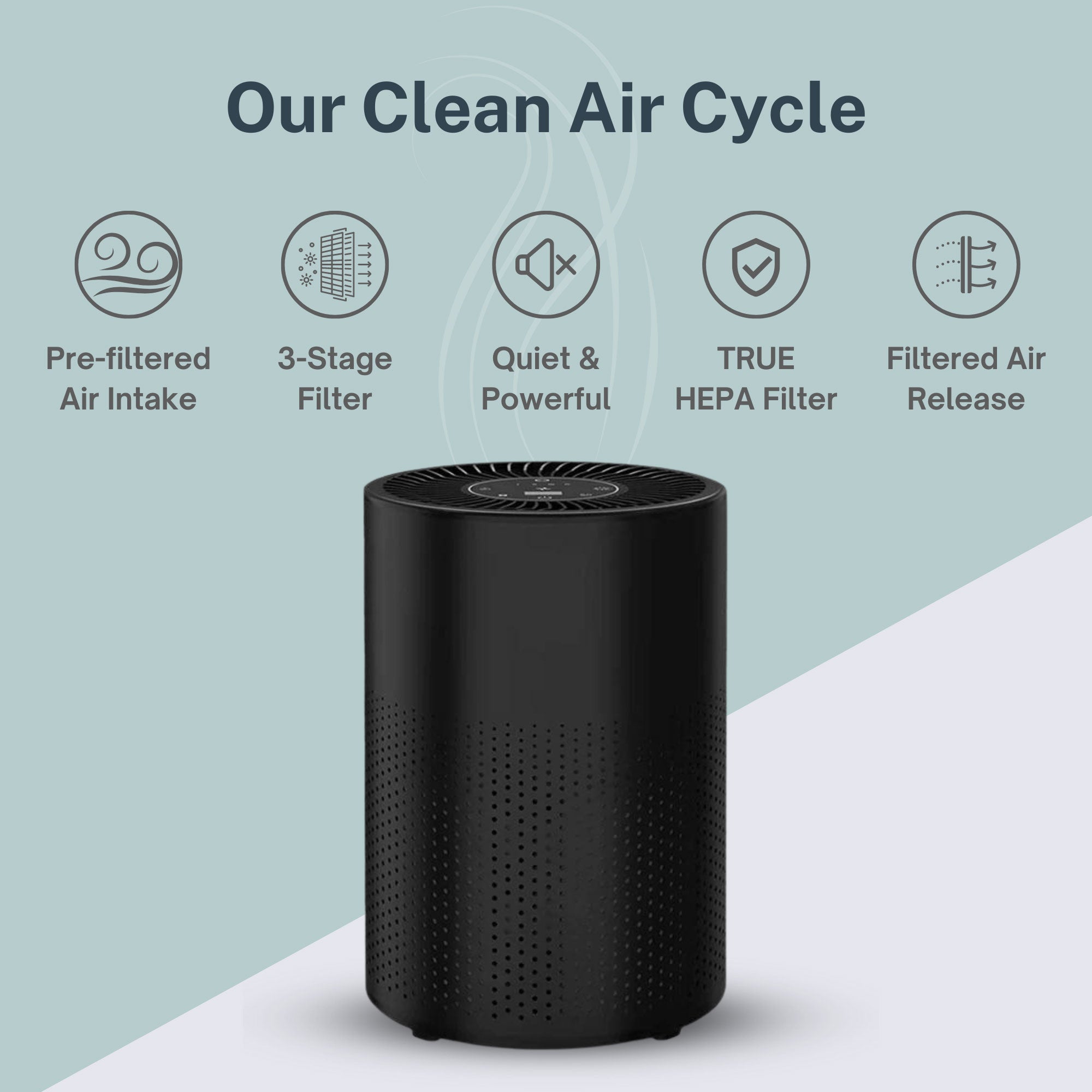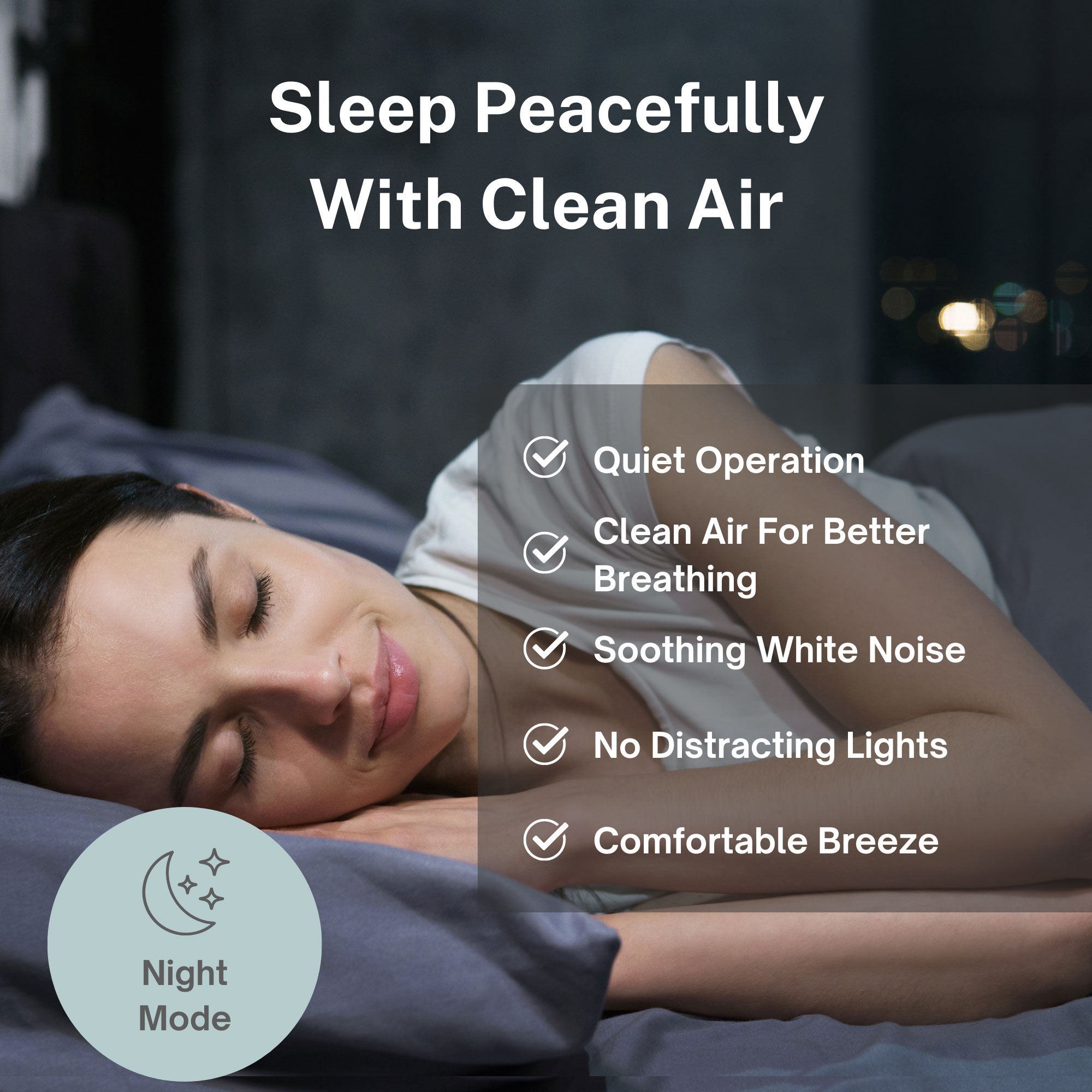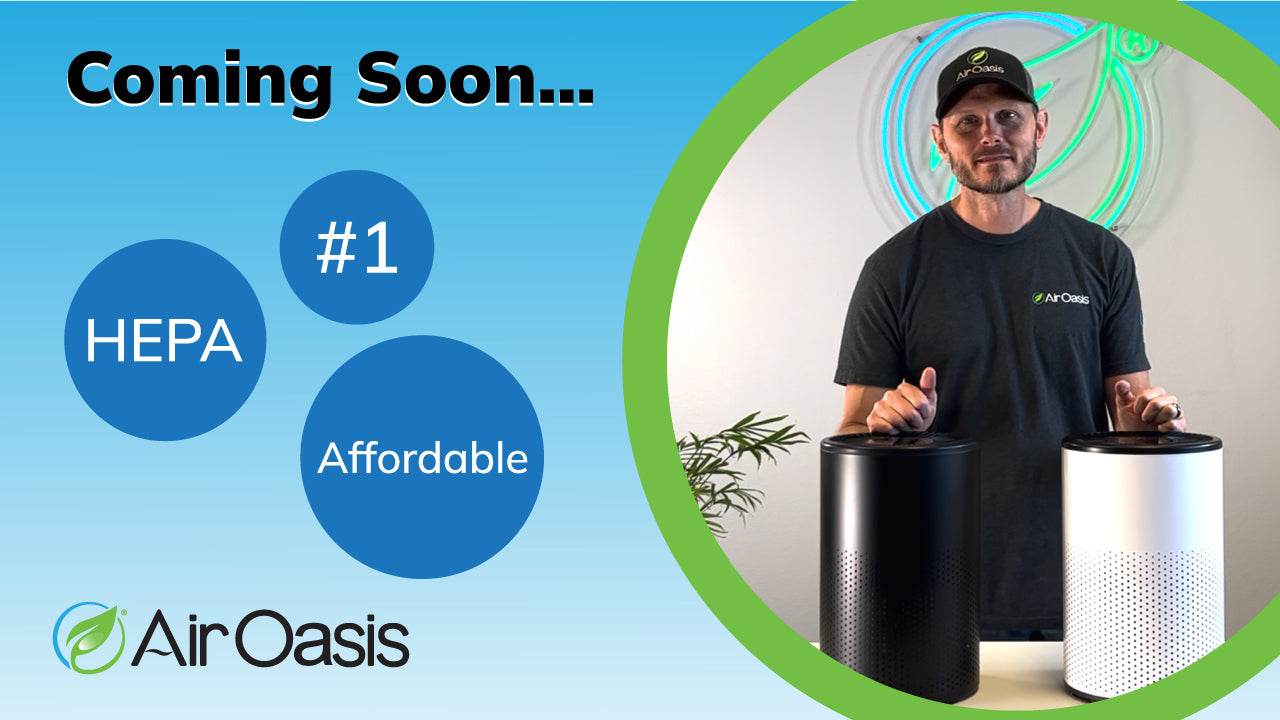Up to 50 percent of American households have mold, but that doesn’t have to be true for your home.
Mold is a type of fungus that thrives in moist environments and can cause serious health problems, including respiratory diseases, fatigue, and headaches.
Air purifiers help remove common allergens and mold from the air, providing relief for people with allergies or chronic asthma.
Whether you’re sensitive to mold, can have reactions just from being in the same room as it, or simply want a cleaner environment, an air purifier can help.
Air Oasis air purifiers not only help treat mold in the air but also remove allergens, stinky smells, viruses, and more. With the right air purifier, you’ll get rid of mold in the air and breathe easier.
Let’s talk through the best mold removal products available today, including those that get mold out of the air and off of surfaces.
Mold Remediation
There are many reasons for mold exposure, including building exterior leaks, flooding, broken water pipes, or poor ventilation. With these environmental and structural dynamics, the concentration of mold spores, mold fragments that break apart from mold structures, and VOCs like mycotoxins can increase.
If you are experiencing mold-related physical symptoms or are concerned about mold growth in your home, mold remediation may be necessary to protect the health of your family and those who live or work on the property.
Because of the risk to human health, we recommend the well-regarded, peer-reviewed IICRC S520-2015 Standard for Professional Mold Remediation. Another published resource is the Indoor Environmental Panel of Surviving Mold Consensus Statement for Microbial Remediation.
Mold remediation is a multi-step process during which technicians work on the infected areas of a property to ensure the removal of microbial growth and contamination. The mold remediation process generally follows four steps performed by a professional mold remediation company: inspection, containment and engineering controls, physical removal of mold-contaminated materials, and environmental cleaning.
When mold is suspected or discovered, experts will send a technician to inspect and identify the area in question. In addition, they will locate the source of moisture that led to mold growth.
The inspection process uses tech-based tools such as thermal cameras and moisture meters to ultimately locate mold. Sometimes mold sampling is also performed to further help identify and define the scope of the issue. When the scope of work has been determined, the mold remediation company should follow industry standards in a written protocol for indoor environmental professionals.
Remediation may include building materials, interior surfaces, and personal property such as clothing and furniture. Personal items including clothing, furnishings, and furniture are often included in the environmental cleaning step.
The time it takes to remediate a mold issue on a property can vary depending on factors such as the size of the space, the extent of the mold contamination, and damage that has been caused. In many cases, the work can be completed in a few days, but it may take weeks to return a property to its pre-mold loss condition.
Mold Prevention
The number one goal is to keep surfaces and air clean so that mold never develops. But in some environments, it can be tough to prevent or detect mold.
Mold grows indoors when it has organic materials to feed on and plenty of moisture. In a typical house, there are numerous organic materials for mold to live on, such as wood, drywall, and various other building materials. Those items are essential for construction and unlikely to be exchanged in full for any non-organic materials in the typical residential building process.
Moisture, on the other hand, can be controlled. Keeping the moisture in your home as low as possible is the best way to prevent mold growth.
To mitigate moisture in your home, you should prevent water leaks, condensation, and reduce humidity. Most mold needs 24-48 hours of moisture to grow. If a suitable material in your home is wet for more than 24 hours, you run the risk of mold growth.
You can also prevent mold with sunlight. Mold loves dark, warm spaces indoors to grow in, so letting in sunlight will reduce mold and you may want to consider a lower thermostat setting.
Controlling the air in your home through temperature and humidity will help prevent mold.
Removing Mold from Structures and Surfaces
Non-porous surfaces like showers, toilet tanks, and window sills may be addressed with routine household cleaning. In such cases, the topical removal with readily-available household cleaning items such as five drops of homeowner dish soap in a quart of water and the use of a microfiber cloth.
Whenever attempting to remove mold, be sure to use personal protection equipment (PPE) like eye-protection like eye protection, nitrile gloves, and a half-mask respirator (P100 with organic vapor cartridge).
It can difficult to assess the difference between a DIY situation and one that requires professional help. If in doubt, call a professional and ask for guidance. Please note that if the suspected mold growth appears to indicate a more significant issue (e.g., mold behind a wall, or growing on a porous material such as sheetrock), we recommend you hire an indoor environmental professional (IEP) to further assess the situation.
Removing Mold From the Air
Individual symptoms from mold can range from a mildew smell to allergy reactions, to symptoms associated with to those with various forms of chronic illness and/or low-dose environmental exposure concerns. In short, mold ought not be ignored.
Mold growth emits spores and fragments into the environment. It is common to have background levels of mold structures and mycotoxins indoors. While this is normal, elevated levels can cause adverse health responses in certain individuals.
Scientific studies have shown that running a high-quality air purifier can drastically reduce mold in the air. When it comes to mold prevention, a HEPA filter is appropriate to help remove mold spores and fragments from the air.
Air Oasis air purifiers remove and reduce numerous airborne contaminants and toxins, including mold and its byproducts like mycotoxins and beta-glucans. A quality air purifier does not replace professional remediation and cleaning efforts but it is one the recommended tools to sustain a cleaner indoor environment.
Discover Air Oasis purifiers to aid in your fight against mold in your home.




